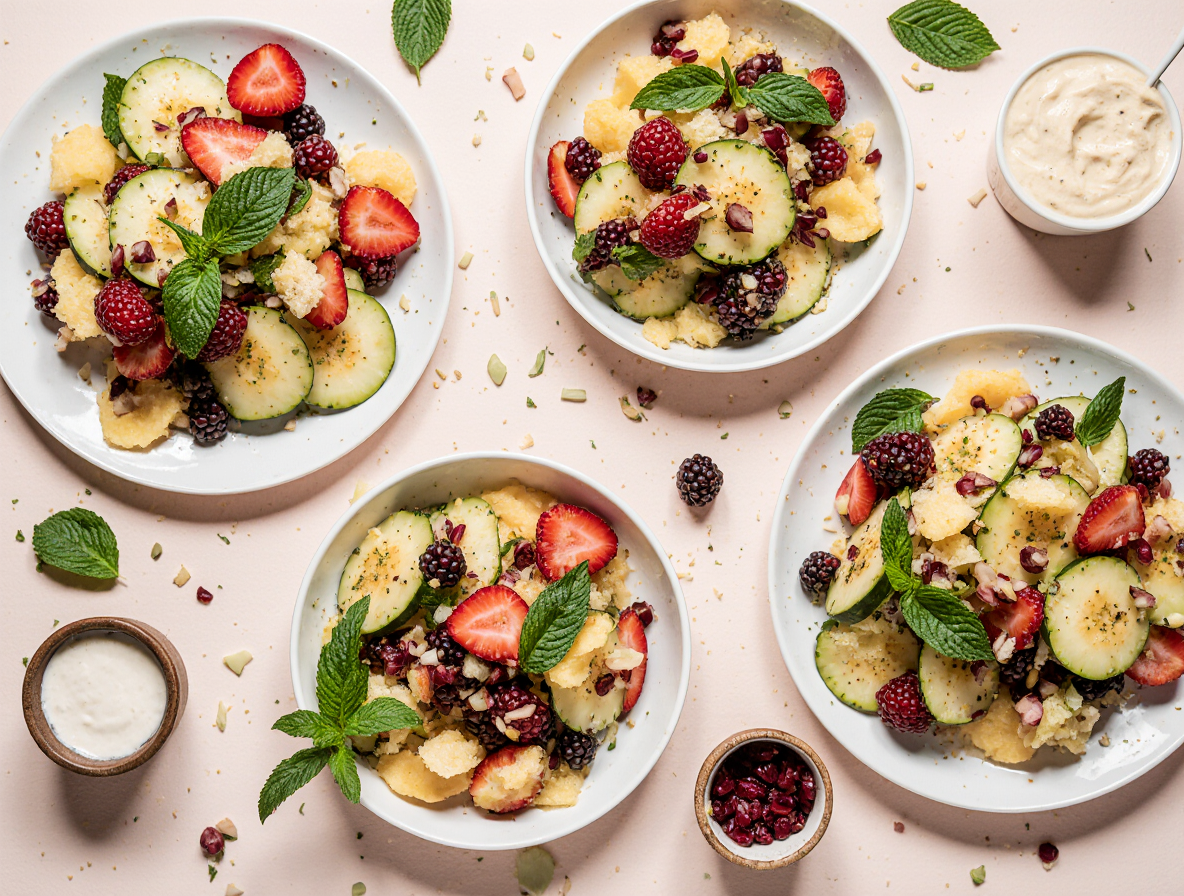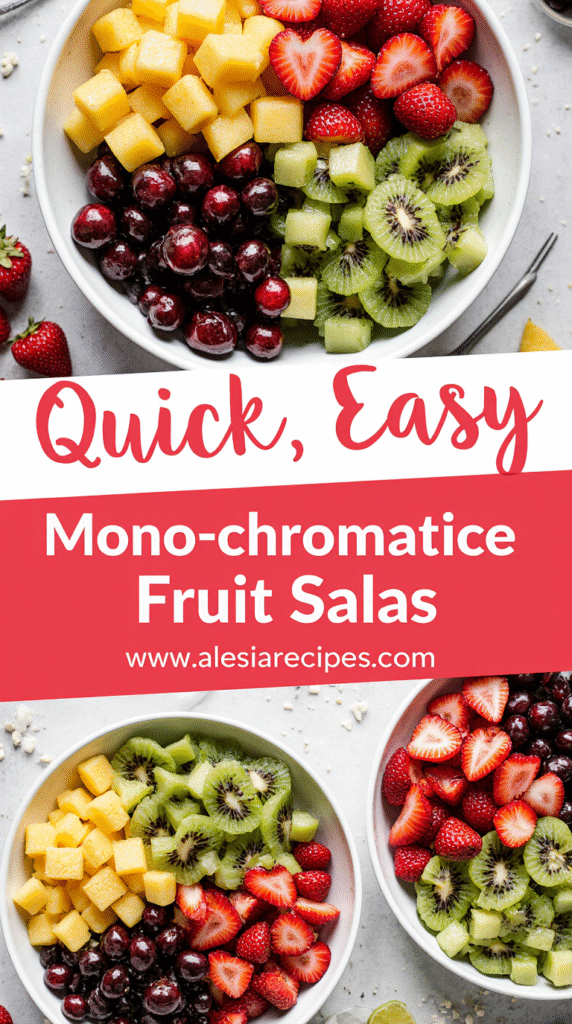How to Make the Perfect Easy Summer Fruit Salad: A Color-Themed Guide
Bright, colorful, and incredibly delicious, an easy summer fruit salad is the perfect refreshing treat during hot weather months. I’ve found that creating these vibrant fruit medleys takes just 20 minutes but delivers impressive results that everyone loves.
Summer is certainly the best season for beautiful fresh fruits, making fruit salad preparation as simple as selecting what looks most appealing at your local farmers market. Besides being delightful to look at, these colorful summer fruit salad recipes pack a serious nutritional punch – with each serving providing 274 calories and an impressive 186% of your daily Vitamin C requirements. Additionally, what makes summer fruit salads so versatile is that they work in any season – you can use berries and stone fruits during warmer months or switch to other seasonal options when temperatures drop.
In this guide, we’ll explore how to create eye-catching, color-themed fruit salads that are not only visually stunning but also plant-based, dairy-free, and refined sugar-free. I’ll share my favorite tips for choosing the best fruits, arranging them by color, and ensuring your easy fruit salad stays fresh and flavorful with simple tricks like a squeeze of lemon.
Choosing the Right Fruits for Summer
Selecting the right ingredients is the foundation of any easy summer fruit salad. Fresh fruit is always superior to frozen or canned options, as it provides the best texture and balanced flavor profile. Furthermore, seasonal fruits will deliver peak taste while often being more affordable.
The secret to a stellar summer fruit salad lies in choosing fruits at optimal ripeness. Look for vibrant colors, slight softness when gently squeezed, and a sweet aroma—especially with melons and stone fruits. For berries, inspect containers thoroughly, as mold can hide underneath. Essentially, each fruit has its own ripeness indicators: strawberries should be bright red without white shoulders, kiwis should yield slightly to pressure, and grapes should be plump and firmly attached to stems.
Consider texture when combining fruits. Mix soft fruits like peaches or mangoes with crisper options such as grapes or pineapple for pleasant textural contrast. This balance prevents your creation from becoming one-dimensional. Additionally, pairing fruits with similar ripeness levels helps maintain consistent texture throughout the salad.
While most fruits can star in your summer fruit salad recipe, several should be approached with caution:
- Bananas and apples: Both oxidize quickly, turning brown and potentially affecting appearance. If using them, add just before serving or toss with lemon juice.
- Watermelon and cantaloupe: Their high water content (watermelon is 91% water) can make other ingredients soggy.
- Citrus fruits: Their acidity can overpower milder fruits and turn them mushy rapidly.
- Pineapple: Contains bromelain, an enzyme that can break down other fruits, affecting both flavor and texture.
For the best summer fruit salad, prioritize a rainbow of colors—reds, blues, yellows, oranges, and greens—which not only creates visual appeal but also provides a wider range of nutrients and antioxidants. This approach naturally incorporates fruits like strawberries, blueberries, mangoes, oranges, and kiwis for a vibrant, nutritious creation.
Creating a Color-Themed Fruit Salad
Color-themed fruit salads transform an ordinary dish into a stunning centerpiece. Rather than tossing various fruits together randomly, thinking of your fruit salad as an artistic arrangement with deliberate color schemes creates a memorable impression.
The monochromatic approach—using fruits of similar color—offers a sophisticated alternative to traditional mixed fruit salads. Instead of the predictable combination of honeydew pieces, lackluster grapes, and tough pineapple found in store-bought varieties, a single-color theme feels special and surprising. For instance, a ruby-hued salad with figs, black plums, grapes, blackberries, pomegranate seeds, blueberries, and cherries creates dramatic visual impact.
Alternatively, try organizing by color families:
- Red: Strawberries, watermelon, cherries, raspberries, and plums make a vibrant crimson display
- Yellow/Golden: Pineapple, golden raspberries, star fruit, mangoes, and Meyer lemon
- Green: Honeydew, kiwi, green grapes, green apples, and mint leaves
- Blue/Purple: Blueberries, blackberries, purple grapes, and dark plums
Moreover, measuring your ingredients before combining them ensures perfect balance of flavors and colors. This thoughtful approach lets each fruit’s texture and taste play a starring role.
For maximum visual impact, layer fruits in a glass container. Begin with juice-resistant varieties at the bottom, then add progressively softer fruits. A squeeze of lemon helps brighten flavors and keeps cut fruit looking fresh, while a spoonful of sprinkled sugar makes everything glisten.
In fact, successful color-themed fruit salads consider both appearance and flavor dynamics. The interplay between fruit and accent elements creates interest, not from including too many varieties. Pick one or two superstar fruits as your base, then build around them with complementary colors and textures. With this in mind, you’ll create a fruit salad that’s not just delicious but visually unforgettable.
Tips to Make It Perfect Every Time
The difference between an ordinary fruit salad and the best summer fruit salad lies in mastering a few simple techniques. Creating a memorable fruit medley requires attention to both preparation and presentation.
To prevent browning, toss cut fruits in an acidic juice. Orange, lemon, or lime juice works exceptionally well, as the acid inhibits enzymatic browning by reducing the fruits’ exposure to oxygen. For apples, pears, peaches, or bananas, this step is crucial—coat them thoroughly, particularly if preparing ahead. Alternatively, a quick dip in acidulated water (1 cup water with 1 teaspoon lemon juice) keeps fruit looking fresh without changing its flavor profile.
Timing matters significantly when making your easy summer fruit salad. Although it can be made a few hours in advance, I recommend preparing it no more than 15-60 minutes before serving. If necessary, you can prepare ingredients the day before: wash and cut fruits, store them separately, and combine just before serving. This approach prevents softer fruits from becoming mushy.
For storage, always use an airtight container and refrigerate immediately after preparation. Place a paper towel directly on the surface of the salad to minimize air exposure and prevent browning. Properly stored, your summer fruit salad recipe will stay fresh for 3-5 days.
Consider these additional touches to elevate your creation:
- Add fresh herbs like mint or basil for unexpected brightness
- Include chopped nuts for protein and textural contrast
- Present in a carved-out watermelon half or pineapple for dramatic effect
- Serve alongside yogurt, whipped cream, or ice cream for a more substantial dessert
Remember to dry washed fruit thoroughly before adding it to your summer fruit salad recipes to prevent excess water accumulation. Furthermore, wait to add delicate fruits like bananas or extremely soft berries until just before serving.
A pinch of salt may seem counterintuitive, yet it actually enhances sweetness by triggering a nerve response that heightens our receptiveness to sugars. This simple addition can transform an ordinary easy fruit salad into something truly remarkable.
Conclusion
Summer fruit salads stand out as one of the most versatile and rewarding dishes anyone can prepare. Throughout this guide, we’ve seen how thoughtful fruit selection, color-themed arrangements, and proper preparation techniques transform a simple concept into something truly special.
Fresh, seasonal fruits will always deliver the best results for your salads. Their vibrant colors not only create visual appeal but also signal peak nutritional value. Actually, this colorful approach ensures you receive a wide spectrum of vitamins and antioxidants with every delicious bite.
The color-themed strategy certainly elevates ordinary fruit combinations into memorable culinary experiences. Whether you choose a stunning monochromatic display or organize by color families, this thoughtful approach makes your creation stand out at any gathering.
Timing matters significantly when creating your perfect fruit salad. Though some advance preparation helps, combining ingredients shortly before serving guarantees optimal freshness and texture. Additionally, simple tricks like a squeeze of lemon juice or proper storage techniques keep your creation looking and tasting its best.
Most importantly, fruit salads offer endless opportunities for personalization. You might add fresh herbs for brightness, include nuts for texture, or serve alongside complementary sides like yogurt or ice cream. These easy modifications allow you to adapt your creation to any occasion or preference.
The beauty of mastering summer fruit salads lies in their accessibility. You don’t need advanced culinary skills or expensive ingredients to create something truly impressive. Rather, success comes from understanding a few basic principles and applying them with care and creativity.
Next time you find yourself surrounded by summer’s bounty, remember these simple guidelines. Your colorful creation will surely impress family and friends while providing a healthy, refreshing treat that celebrates the season’s best offerings.
FAQs
Q1. What are the key ingredients for a perfect summer fruit salad? A perfect summer fruit salad typically includes a variety of fresh, seasonal fruits such as strawberries, blueberries, kiwi, grapes, pineapple, and mandarin oranges. The key is to choose ripe, colorful fruits that offer a mix of textures and flavors.
Q2. How can I keep my fruit salad fresh for longer? To keep your fruit salad fresh, toss cut fruits in citrus juice (like lemon or lime) to prevent browning. Store the salad in an airtight container in the refrigerator, and place a paper towel directly on the surface to minimize air exposure. Properly stored, a fruit salad can stay fresh for 3-5 days.
Q3. What’s the best way to create a visually appealing fruit salad? Create a visually appealing fruit salad by using a color theme. You can opt for a monochromatic look using fruits of similar colors, or organize fruits by color families such as red (strawberries, watermelon), yellow (pineapple, mango), or blue/purple (blueberries, grapes). Layer fruits in a glass container for maximum visual impact.
Q4. Are there any fruits I should avoid using in a fruit salad? It’s best to use caution with certain fruits in your salad. Bananas and apples can brown quickly, while watermelon and cantaloupe can make other ingredients soggy. Citrus fruits can overpower milder flavors, and pineapple contains enzymes that can break down other fruits. Add these fruits just before serving or use them sparingly.
Q5. How can I enhance the flavor of my fruit salad? To enhance the flavor of your fruit salad, consider adding a simple dressing made from lime juice, honey, and a pinch of salt. Fresh herbs like mint or basil can add unexpected brightness. For texture contrast, include chopped nuts. You can also serve the salad with yogurt, whipped cream, or ice cream for a more substantial dessert.


